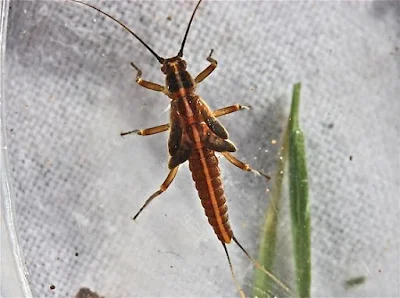Some flies are born from the bench…
This one was born in the water.
The Willow Nymph is a pattern I developed after doing what more of us should do — getting hands-on with the river. I spent time sampling streambeds, flipping rocks, and even checking trout stomach contents to see what they were actually eating. One bug kept showing up again and again — a small dark stonefly nymph.
So I tied a fly to match it.
Simple as that.
And that’s how the Willow Nymph was born.
🌊 A Quick Word on Stoneflies
Stoneflies are a key part of the trout menu in many streams — especially clean, oxygen-rich waters. These insects live a long time in the nymph stage, crawling around on rocks and debris before emerging. While not as flashy as mayflies or caddis, they’re a reliable, year-round food source that trout don’t ignore.
They have a distinct shape:
🔹 Slim, segmented bodies
🔹 Two tails
🔹 Long antennae and legs
🔹 Often dark brown to black in color
The Willow Nymph was designed to match that general silhouette, with just enough realism to fool picky fish, but enough durability and movement to hold up, fish after fish.
🪶 Materials & Design
-
Dark brown dubbing body for a natural stonefly tone
-
Thin profile to match the naturals I found streamside
-
Soft legs and antennae for subtle movement
-
Simple wingcase to complete the look
No flash, no gimmicks — just a solid hatch-matching fly that’s earned its place in my box by producing.
🧪 Field-Tested
This isn’t theory. The Willow Nymph has been fished hard — and it’s brought trout to the net when other patterns didn’t. I’ve used it during early spring, during midday lulls, and especially in pocket water where stoneflies love to cling. From big rivers to small streams, the willow produces tight lines.
Watch the Video:
Willow Nymph – Hatch-Matching Stonefly Pattern
📺 https://youtu.be/7WiNONTXUFE?si=vYVWAahc9az_tzx7
Tied from the stream. Tested on the fish.
The Willow lives.
– Johnny Utah




Have you ever tied a fly based on what you found streamside?
ReplyDeleteOr have a go-to stonefly nymph of your own?
Drop your fishy fieldwork stories below — I wanna hear ‘em.